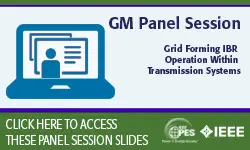Tutorial Course Transient Analysis of Power Systems. Solution Techniques, Tools, and Applications
Analysis of System Transients Using Digital Programs Working Group
-
Members: FreePES
IEEE Members: $45.00
Non-members: $70.00Pages/Slides: 257
29 Aug 2010
The analysis and simulation of electromagnetic transients has become a fundamental methodology for understanding the performance of power systems, determining power component ratings, explaining equipment failures or testing protection devices. The study of transients in general is a mature field that plays an important role in the design of modern power systems. Since the first steps in this field to date, a significant effort has been dedicated to the development of new techniques and more powerful software tools. Sophisticated models, complex solution techniques and powerful simulation tools have been developed to perform studies that are of paramount importance in the design of modern power systems. The first developments of transients tools were mostly aimed at calculating overvoltages. Presently, these tools are applied into a myriad of studies (e.g. FACTS and Custom Power applications, protective relay performance, power quality studies) for which detailed models and fast solution methods can be of paramount importance. Despite the powerful numerical techniques, simulation tools, and graphical user interfaces currently available, those involved in electromagnetic transients studies face, sooner or later, limitations of models available in transients packages, the lack of reliable data and conversion procedures for parameter estimation or insufficient studies for validating models. This tutorial provides a basic background on the main aspects to be considered when performing electromagnetic transients studies (solution techniques, parameter estimation, modeling guidelines), details some of the main applications of present EMTP-like tools (insulation coordination, power electronics applications, protection) and discusses new developments (e.g., dynamic average models, interfacing techniques) mostly aimed at overcoming some of the present limitations.
Primary Committee:
Transmission and Distribution Committee
Sponsor Committees:
General Systems Subcommittee


